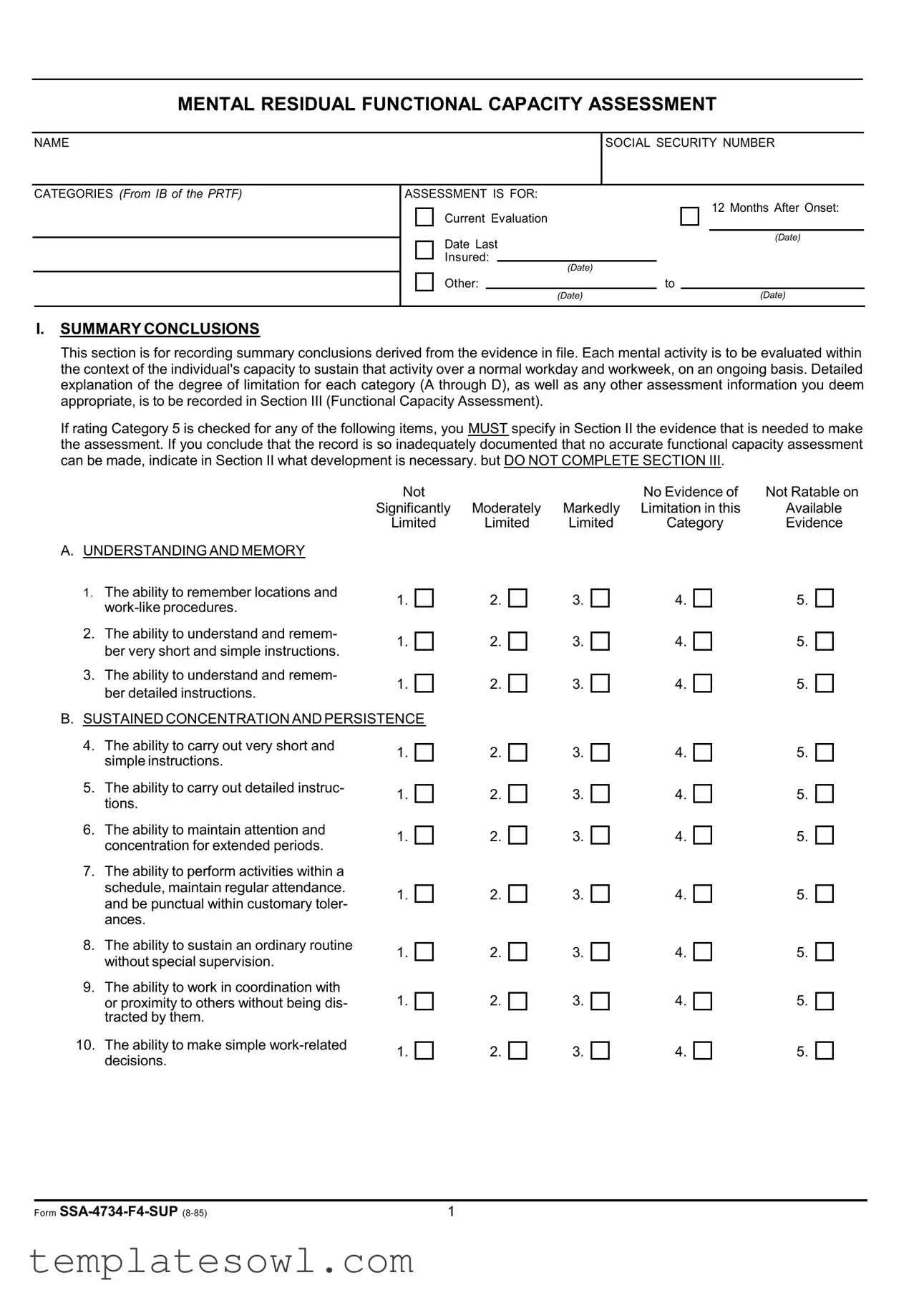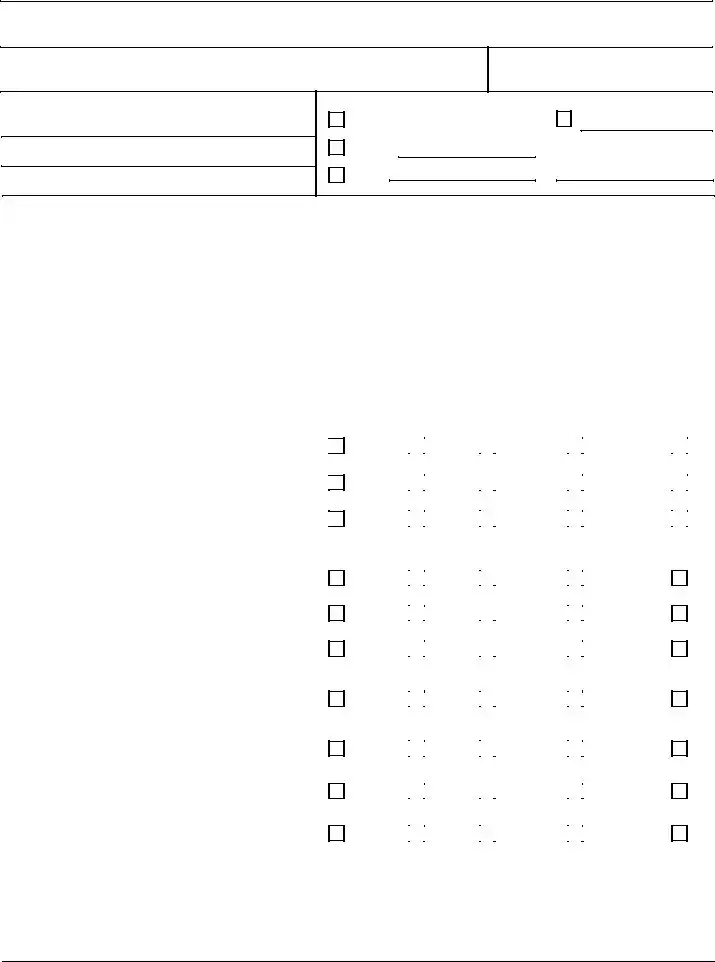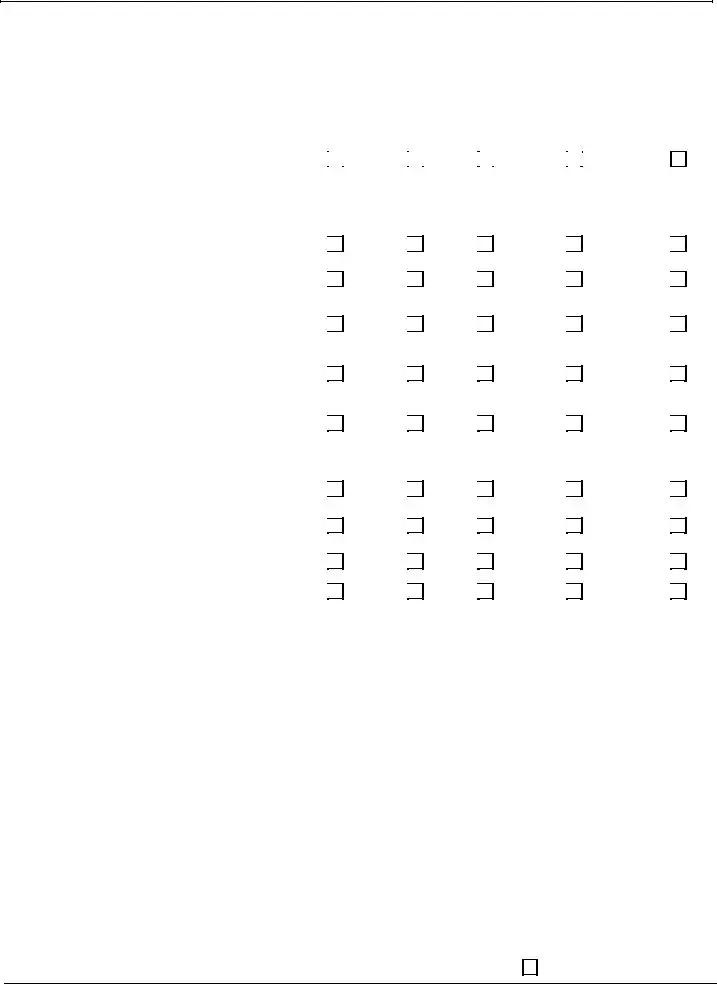What is the SSA 4734 F4 Sup form used for?
The SSA 4734 F4 Sup form is utilized to assess an individual’s mental residual functional capacity. It is part of the Social Security Administration's evaluation process to help determine an individual’s ability to perform tasks necessary for work. This includes an analysis of understanding, memory, concentration, social interaction, and adaptability.
Who completes the SSA 4734 F4 Sup form?
The form is typically completed by a qualified medical consultant who is trained to evaluate mental capacities. This consultant reviews the evidence in the individual's file to provide an accurate assessment of the person's abilities and limitations.
What types of mental activities are evaluated on the form?
The form includes categories assessing understanding and memory, sustained concentration and persistence, social interaction, and adaptation. Each category consists of specific abilities that contribute to an individual's capability to function in a work environment.
What should I do if the records are insufficient to make a clear assessment?
If the documentation is inadequate, the reviewer should indicate the necessary development required in Section II of the form. They should not complete Section III if insufficient evidence is available to make an accurate assessment.
Can I appeal a decision made based on this form?
Yes, individuals have the right to appeal decisions. If you believe an error was made during the assessment, you can request a reconsideration. It's essential to provide any additional evidence or documentation at that time to support your case.
What happens after the SSA 4734 F4 Sup form is completed?
Once the form is filled out, it is submitted within the individual's application for Social Security benefits. The assessments recorded will be considered alongside other information to determine eligibility for benefits.
How is my privacy protected while using this form?
Your privacy is protected under federal law. The information on this form is confidential and is only used for the purpose of evaluating your Social Security claim. Only authorized personnel will have access to it.
What if I disagree with the findings on the SSA 4734 F4 Sup form?
If you disagree with the findings, you can discuss your concerns with your doctor or the consultant who completed the form. It's important to communicate any discrepancies or additional information that may affect the assessment.
Is there a time frame for submitting the SSA 4734 F4 Sup form?
The form should be completed and submitted as part of the application process or during an ongoing disability review. Timeliness is crucial, as delays can affect the overall evaluation timeline for your benefit claim.





































































































 Continued on Page 4
Continued on Page 4